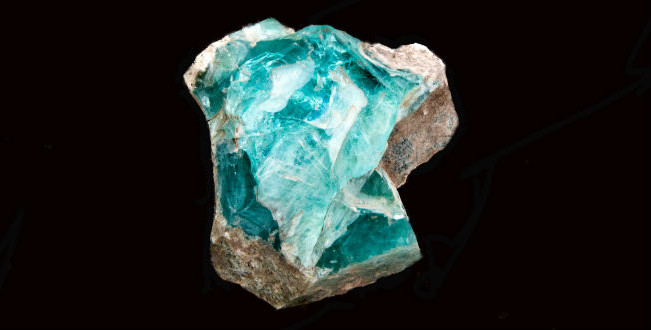Discover 1,600-year-old glass furnace in Israel
The Israeli Antiquities Administration said the country had discovered traces of two 1,600-year-old kilns at the foot of Carmel Mountain, in the Mediterranean coast, during the geological survey for construction. a railway route through this area.
According to Abdel al-Salam Sa'id, excavation team leader, the above kilns are composed of two compartments: a heat-generating furnace and a melting chamber.
Clean sea sand and salt, raw materials for making glass, are put into an oven and melted simultaneously at a temperature of about 1,200 degrees Celsius.
This mixture is baked for 1-2 weeks, until a piece of raw glass is formed, weighing about 10 tons.
Completing the production process, the kiln is cooled; glass pieces are smashed into small pieces and sold to factories, then these factories continue to melt glass chips to turn them into necessary items.

The kilns that produced this glass were a big question for scientists.(Source: breakingisraelnews.com).
Archaeologists say in the ancient world there are two types of glass: Alexandrian glass from the city of Alexandria and Judean glass - cheaper and light green glass from the Israeli Region - of the Southern Levant .
Traces of Judean glass are found in the lands of the Roman Empire.
The results of chemical tests for glass bottles discovered in Europe and in wrecks in the Mediterranean basin have shown that the origin of Judean glass is in the Northern Region of Israel.
However, the kilns that produced this glass were a big question for scientists, until the above two kilns were discovered, completing the missing link in glass studies. Judean.
In the pre-Roman period, the use of glassware was very popular due to the pure and elegant beauty of this material.
Besides, simple fabrication - blowing - significantly reduces the cost of glass products compared to other objects.
Not only is it used to make household items, glass is also used in the construction of public buildings such as windows, mosaics and lights.
- Discover the ancient city dating back to 5,000 years in Israel
- The world's largest solar furnace
- Discover the Guinness Sky Mirror glass in Hubei
- What is glass?
- Unexpected uses of Gorilla Glass
- Discovering a mysterious 2,000-year-old ritual bath in Israel
- Smart glass
- New type of shockproof glass inspired by nature
- Israel showcased a 9,000-year-old sandstone neck mask
- History of glass industry
- How are the strengths produced?
- Glass has the ability to 'transform' when meeting water
 Discovered an ancient centipede fossil 99 million years old
Discovered an ancient centipede fossil 99 million years old Discovered bat-like dinosaurs in China
Discovered bat-like dinosaurs in China Discovered a 200-year-old bronze cannon of the coast
Discovered a 200-year-old bronze cannon of the coast Discover 305 million-year-old spider fossils
Discover 305 million-year-old spider fossils